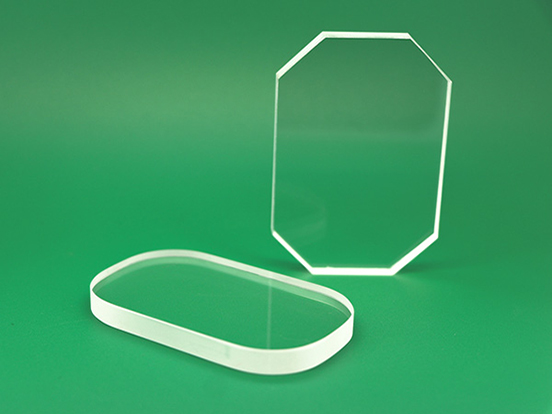UV vs. IR Grade Fused Silica
Dec. 19, 2023
IR grade fused silica differs from UV grade fused silica by its reduced amount of OH- ions, resulting in higher transmission throughout the NIR spectrum and reduction of transmission in the UV spectrum.
Introduction to UV and IR Grade Fused Silica
Fused silica, a form of glass made from high-purity silica, possesses remarkable optical properties, making it highly desirable in various industries. UV and IR grade fused silica are specifically engineered to excel in different regions of the electromagnetic spectrum, catering to distinct applications due to their tailored transmission characteristics.
UV Grade Fused Silica
UV grade fused silica is meticulously crafted to exhibit exceptional transmission capabilities within the ultraviolet spectrum, spanning wavelengths from 185 to 2100 nanometers. Its formulation involves stringent purification processes to minimize impurities that can impede UV transmission. UV grade fused silica is widely renowned for its:
- High transmission efficiency in the UV range.
- Low absorption and minimal fluorescence in UV light.
- Consistency in optical properties across the UV spectrum.
IR Grade Fused Silica
In contrast, IR grade fused silica is engineered to optimize transmission within the infrared spectrum, typically spanning wavelengths from 780 to 3500 nanometers. It undergoes meticulous manufacturing processes to reduce impurities that hinder infrared transmission. Key characteristics of IR grade fused silica include:
- Superior transmission in the infrared region.
- Reduced absorption and minimal thermal effects in the IR range.
- Consistent optical performance across the infrared spectrum.
Characteristics and Properties
UV Grade Fused Silica Properties
UV grade fused silica exhibits exceptional characteristics tailored for applications requiring precise UV transmission:
- High UV Transmittance: It boasts high transmission efficiency in the UV spectrum, ensuring minimal loss of UV light passing through the material.
- Low Absorption: UV grade fused silica minimizes absorption of UV light, allowing for accurate analysis and experimentation in UV-sensitive applications.
- Minimal Fluorescence: Its low fluorescence properties prevent unwanted emission of light when exposed to UV radiation, ensuring accuracy in measurements and analyses.
IR Grade Fused Silica Properties
IR grade fused silica possesses distinctive properties suited for efficient infrared transmission:
- Superior IR Transmittance: It demonstrates superior transmission capabilities in the infrared spectrum, enabling effective passage of IR light through the material.
- Reduced Absorption: IR grade fused silica minimizes absorption of infrared light, facilitating precise analysis and imaging in IR-sensitive applications.
- Thermal Stability: It exhibits good thermal stability, allowing it to withstand higher temperatures associated with certain IR applications without significant degradation.
Applications
UV Grade Fused Silica Applications
UV grade fused silica finds widespread application in various fields that require precise UV transmission:
- UV Spectroscopy: It is extensively used in UV spectrometers for analyzing substances based on their UV absorption and emission spectra.
- Semiconductor Manufacturing: UV grade fused silica is crucial in photolithography processes for precise patterning in semiconductor manufacturing.
- Medical Instrumentation: It is employed in medical equipment such as UV sterilization systems and diagnostic tools reliant on UV light.
IR Grade Fused Silica Applications
IR grade fused silica is employed in numerous applications requiring efficient transmission within the infrared spectrum:
- Infrared Spectroscopy: It is vital in spectroscopy instruments for analyzing materials based on their IR absorption spectra.
- Thermal Imaging: IR grade fused silica optics are used in thermal imaging devices for accurate temperature measurements and imaging.
- Laser Systems: It serves as a fundamental component in infrared laser systems for applications in telecommunications, material processing, and defense.
Conclusion
In conclusion, the distinction between UV and IR grade fused silica lies in their optimized transmission properties within different segments of the electromagnetic spectrum. UV grade fused silica excels in the ultraviolet range, while IR grade fused silica demonstrates superiority in the infrared spectrum.
Understanding these distinctions is pivotal for selecting the most appropriate grade of fused silica tailored to specific optical requirements. The precise engineering and properties of UV and IR grade fused silica underscore their indispensability in advancing technology across various industries.




















